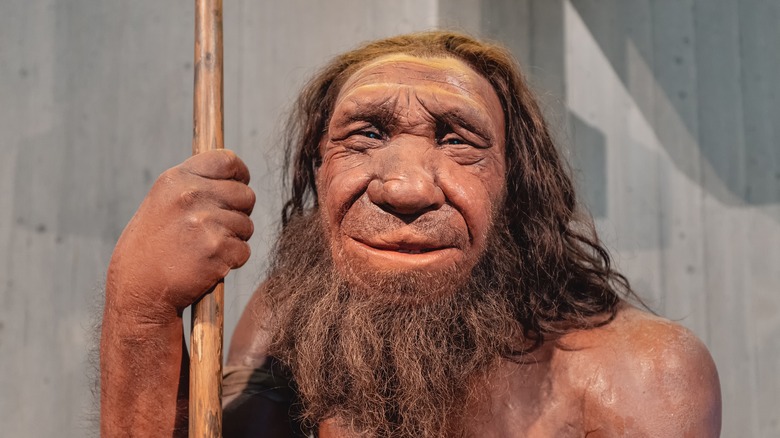A Site Discovered In France Could Change What We Know About Homo Sapiens In Europe
Unless you're from outer space, you're probably a member of the Homo sapiens species. Otherwise, some weird "Planet of the Apes" thing is going on thousands of years after this article. Regardless, these hairless monkeys with tools have achieved some remarkable things and — as far as any researcher is concerned — has never even been fully replicated by any other life form on Earth. Perhaps even more fascinating is that Homo sapiens have only been around for a relatively short period (in the cosmic scheme of things, that is), only having existed for roughly 300,000 years (via the Smithsonian).
Originally evolving in Africa, human beings have spread to almost every corner of the Earth. But recently, researchers' timeframe of this exodus has been changed with a discovery in Southern France. Experts once believed that Homo sapiens arrived in Europe roughly in 45,000 B.C., wiping out the Neanderthals who were there beforehand. However, new evidence suggests this arrival might've happened 10,000 years earlier than once thought, leaving leaders in the field questioning how modern humans and their ancient cousins interacted with one another (via Science News).
Homo Sapiens and Co.
Unlike the Homo sapiens, Homo neanderthalenis (the scientific name for Neanderthals), diverged from our own species roughly 500,000 to 650,000 years ago, taking refuge in Europe and Western Asia, according to the Natural History Museum. Unlike their human counterparts, Neanderthals were short and stocky creatures who had broad noses and weighed roughly 140 to 180 pounds. Neanderthals made jewelry — usually out of teeth and ivory — along with other tools.
Scientists have been puzzled by why the Neanderthals, along with all other human species, went extinct, leaving only Homo sapiens to remain. Many have theorized that as Homo sapiens spread from Africa, they pillaged and ravaged these other beings to extinction. In contrast, others think that they interbred, given that multiple ethnic groups today share DNA with the Neanderthals and other human groups. Some experts take a middle ground between these ideas, however, and the new evidence found in Grotte Mandrin points in that direction.
Early human relationships
According to Science News, the evidence that led scientists to abandon their preconceived timeline for Homo sapiens' arrival in Europe was the discovery of a tooth that belonged to a small human child. This suggests that both Neanderthals and Homo sapiens called the place home interchangeably and possibly exchanged information about how to survive in the region with one another.
Tools that were also found at the Grotte Mandrin site were remarkably similar to sites found in Lebanon or in the Middle East, indicating that these early European arrivals might've been their descendants. The site also wasn't a temporary settlement set up by a hunter-gatherer group either; rather, the earliest Homo sapiens occupied the area for around 40 years, which almost guarantees they were in contact with the Neanderthals of the area. Regardless, as researchers do more digging, relationships between our ancestors and their evolutionary cousins get more complicated, and perhaps stories of love, war, and friendship have been there since the beginning, giving us the ability to relate to a world of the ancient past.


